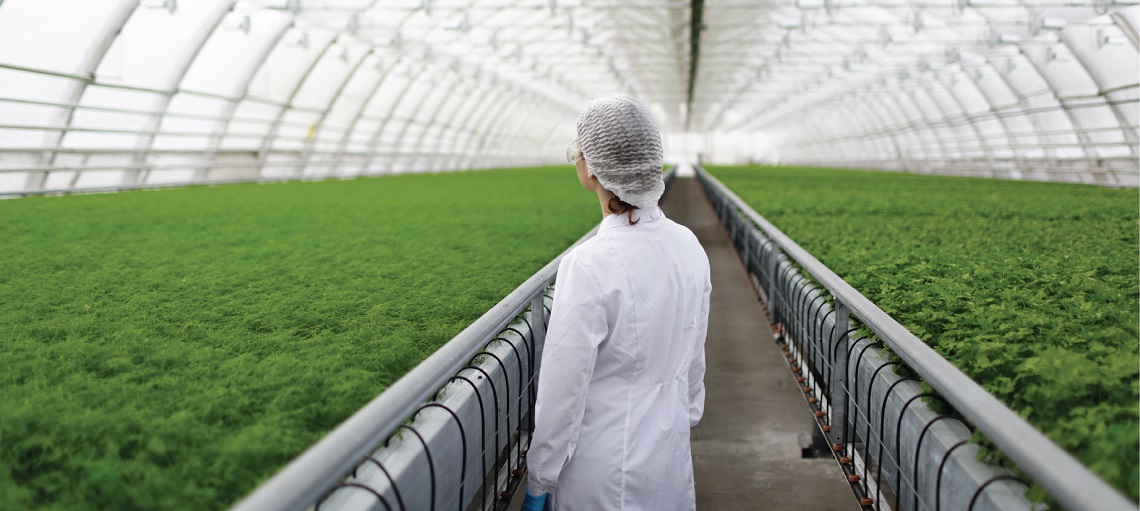Looking Ahead: Big Dutchman is Poised to Meet Asia’s Opportunities in Controlled Environment Farming
As Asia’s population continues to rise and its cities grow denser, the demand for food production is reaching unprecedented levels. Research shows that by 2030, Asia is set to be home to 27 megacities with over 10 million people each. Traditional farming methods are increasingly unable to meet the challenges of food security, sustainability, and climate unpredictability. Controlled Environment Farming (CEF), which includes greenhouses, vertical farming, and other indoor growing techniques, is emerging as a solution to these problems. Let’s look into how CEF can optimise growing conditions for crops, allowing year-round production and better resource management.
What is Controlled Environment Farming?

Controlled Environment Farming (CEF) refers to agricultural systems where environmental variables such as temperature, light, humidity, and nutrients are carefully managed. CEF ranges from simple greenhouses to advanced vertical farming setups that use artificial lighting and hydroponic systems. In these setups, crops are protected from external environmental factors, allowing for higher yields, better quality, and more efficient resource use.

For horticulture, especially in regions where the climate is unpredictable, CEF offers the ability to grow high-value crops like fruits, vegetables, and flowers under optimal conditions. This is critical in regions like Southeast Asia, where extreme weather events like typhoons and monsoons can disrupt traditional farming. In recognising this development, Big Dutchman’s partnership with Ammerlaan Construction has embarked on providing high-tech horticulture solutions in Asia.

Their combined experience allows for the perfect turnkey solution for glass and foil greenhouses. This includes designed fertigation rooms and irrigation systems, along with shading, lighting and electrical installations, which are all operated by modern climate control systems. As a one-stop horticulture solution, this will set the stage for meeting all the opportunities Asia has to offer in the growing CEF agriculture sector, which includes:
1. Food Security Demands
With Asia accounting for more than 50% of the global population, the demand for food is immense. The United Nations estimates that by 2050, the world will need to increase food production by 60% to feed a growing global population. Asia faces this challenge more acutely than other regions due to its rapid urbanization. Traditional farming methods, constrained by land availability and environmental issues, are struggling to keep up.
CEF provides a solution by offering stable, predictable, and efficient food production, making it easier to produce a consistent supply of fresh produce. For instance, Singapore, which imports 90% of its food, has turned to vertical farming to meet its food security needs. The country’s "30 by 30" initiative aims to produce 30% of its nutritional needs locally by 2030, and CEF is a cornerstone of this strategy.
2. Optimising Land Use in Urban Areas
As more people move into cities, arable land is becoming increasingly scarce. In countries like Japan, South Korea, and Hong Kong, where land is at a premium, CEF is providing a way to maximize production using minimal space. Greenhouses and vertical farms allow urban spaces to become productive agricultural zones.
In Tokyo, Pasona Urban Farm operates a high-tech indoor farm inside an office building, where employees grow vegetables for their meals. This kind of integration between urban environments and agriculture is a perfect example of how CEF can be used to optimize land use in Asia's crowded cities.
3. Technological Innovation in Agriculture

Asia’s rapid adoption of advanced technologies makes it an ideal hub for the growth of CEF. IoT (Internet of Things) sensors, artificial intelligence, and robotics are all playing an increasing role in farming systems. These technologies monitor and control environmental factors in real-time, ensuring crops get precisely what they need to thrive.
For example, South Korea’s Smart Farm Innovation Valley project aims to build high-tech greenhouses that use IoT and AI to control light, humidity, and temperature. This kind of innovation reduces waste and increases efficiency, making it easier for farmers to grow more with fewer resources.
4. Environmental Sustainability

One of the biggest opportunities CEF provides is sustainability. Traditional farming often requires large amounts of water, pesticides, and fertilizers, contributing to environmental degradation. CEF systems, especially hydroponic and aeroponic setups, use far less than traditional farming methods. By recycling water and nutrients, these systems reduce the environmental impact of farming and contribute to the preservation of natural resources.
Greenhouses, which are more common in Asia than fully vertical farms, also offer a more sustainable way to grow crops by controlling pests without chemicals and extending growing seasons without overusing water.
Controlled Environment Farming represents a revolutionary shift in how food is grown, especially in Asia, where land is scarce, and populations are dense. The opportunities for CEF to address food security, sustainability, and urbanization are immense. However, significant challenges remain, including high startup costs, energy consumption, and a lack of technical expertise.
Want to know more about our turnkey horticulture solutions? Click the ‘Send a Message’ Button below to talk to us.

